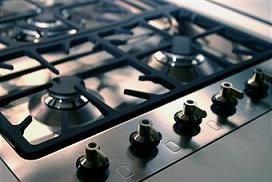 |
| Gas |
While the problems with methane concentration in the atmosphere still exist, you need not resort to canaries to save your lives now. There exist quite a few simple methods and some amazing devices which can help you detect the presence of this gas in your surroundings. Before we get into the details on how to detect the presence of methane in the atmosphere, let's try to understand why it is important to do so.
Why is Methane Gas Harmful?
Methane is known to for its tendency to explode as a result of which the presence of this gas in closed environment puts you at a constant threat of the same. Methane is known to cause explosions in coal mines - wherein the gas which is trapped beneath the Earth's crust is released as a result of mining. Methane causes fire in landfills - wherein it is produced by anaerobic bacteria in a process known as methanogenesis. Coming to our homes, methane forms an important constituent of the natural gas which we use for cooking. At the same time, the chances of naturally occurring methane slipping into your well and methane leaking from the sewer lines (see sewer gas smell in house) also increases your likelihood of coming in contact with it.
While the presence of methane gas in coal mines or at landfills may not put you at a direct threat of this gas, methane gas exposure within the closed walls of your home does - especially because of its tendency to replace oxygen in the atmosphere. Our lungs are programmed to function normally when the atmospheric concentration of oxygen is 21 percent, but when the same comes down - as a result of the presence of methane in the surroundings, it can trigger asphyxiation i.e. the condition of being deprived of oxygen, which can even result in death.
How to Detect Methane Gas?
As methane is odorless and colorless in nature, detecting it can be a bit difficult - and that makes its presence in your surroundings all the more dangerous. Resorting to commercially available methane gas detectors is by far the best method of detecting the presence of this gas around you. Most of these detectors are portable, which means you can easily carry them around in your kitchen or near the sewer lines to detect the presence of methane. You can also resort to fixed gas detectors for detection of methane leaks. However, you need to make sure that you install the same at a considerable height - preferably close to the ceiling, as methane being lighter than air tends to ascend and escape from the atmosphere. As far as methane gas detectors cost in concerned, the lower end models will cost you somewhere around $50, while the higher end models will cost you somewhere around $200 with ease.
If you suspect methane concentration in your well, you can resort to the bottle test to confirm the same. You just need to fill a bottle with this well water till half way, and close it tightly with the cap. After sometime, you just have open the cap and hold a burning match stick to the mouth of this bottle. If your suspicion is right, you will see a rush of flame when you take the match stick close to the mouth of this bottle. As methane escapes from water with ease, a contaminated well does put you at the risk of methane gas exposure. As methane is odorless, a small amount of methanethiol is added to the cooking gas you use in order to help you detect leakage of the same. Methanethiol - though colorless, has a strong smell which resembles the smell of a rotten cabbage or rotten egg. If there is any leakage of cooking gas, the foul smell of methanethiol will make it easier for you to detect the same.
Other than resorting to the aforementioned measures of detecting methane gas leaks, being on a lookout for methane gas exposure symptoms can also be of some help. Some of the most obvious symptoms of such exposure include difficulty in breathing, suffocation, dehydration, nausea, vomiting, dizziness, confusion, blurred vision and increased heart rate. Taking a note of the age-old adage - 'prevention is better than cure, you can go ahead and take the precautionary measures to make sure that the methane levels in your surroundings never spike to an extent that they harm you.
